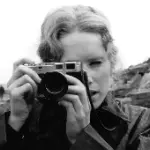
Watching Christopher Nolan's films evokes a peculiar sensation… They demand more than just emotional intuition; one must come prepared with background knowledge before venturing into the theatre. Those unfamiliar with his work might find themselves bewildered by each of his masterpieces, while devoted fans immersed in Nolan's cinematic universe experience a unique, almost reverent pleasure. It's understandable, as his movies are akin to complete rituals in themselves. However, in an age dominated by the likes of Barbie, those in the former category are mounting a bold counterattack against the latter. As Barbie quips, "I don't need you to teach me how to watch movies." Consequently, Nolan's upcoming film, Oppenheimer, steps into this very context, where it confronts the innovative spirit of its own time: the post-MeToo movement era.
Considering the film itself as Christopher Nolan's response to the contemporary zeitgeist might be a fitting perspective. Artificial intelligence, being a ground-breaking technology, can be seen as a Faustian pact for humanity. Likewise, the transition to digital special effects and the departure from traditional film media are analogous transformations in the realm of cinema. Furthermore, in Western societies, cancel culture stemming from identity politics appears to bear an intriguing intertextual relationship with the historical era of McCarthyism. Is Nolan once again using the character of Oppenheimer to voice his uncertainties and reflections on these modern phenomena? Is Nolan again using Oppenheimer's character to voice his uncertainties and reflections on these modern phenomena?
‘Fragments’ as Style

The film's distinctive texture primarily relies on the nearly compulsive use of front-reverse shots, often matching each shot with a character's line of dialogue. Instead of traditional, coherent actions, the characters' facial expressions and emotions take the center stage. The movie maintains an almost continuous soundtrack, which aligns with the film's fragmented narrative as a signature of the director's style, effectively conveying the emotional atmosphere of the McCarthy era. The movie maintains an almost continuous soundtrack, which, as a signature of the director's style, aligns with the film's fragmented narrative, effectively conveying the emotional atmosphere of the McCarthy era. This approach can be seen as a deliberate artistic choice and aesthetic preference for filmmakers. Alternatively, it can be seen as an excessive abundance of ideas, especially when characters' dialogue is repeatedly used to directly convey the film's central themes and ideological messages. However, the pursuit of such aesthetics comes at a cost: the narrative becomes disjointed, characters express themselves with brevity, and intricate theories may be challenging to grasp. In this context, the characters' emotional reactions hold more significance than the depiction of objective events, hence they need their dialogue to directly contribute to the overall narrative balance.
The film prominently features two crucial segments: the nuclear test sequence and the post-bombing celebration ceremony, deliberately structured as core cadenza moments. The former serves not only as a visually stunning showcase but also as a pivotal turning point in the film's narrative. The latter marks Oppenheimer's “awakening moment”. These passages offer the director's ritualistic audio-visual homage: the music abruptly halts, returning the film to its fundamental essence, the “art of light”. The sound of nuclear explosions and the thunderous rhythm of stomping feet resound. The former segment portrays a heroic deed in the eyes of all, while the latter encapsulates Oppenheimer's realization that he has become a harbinger of death, and the struggle that followed. One exudes joy, and the other embodies sorrow. The former represents the elation of being part of the world, while the latter depicts the struggle to escape it. Within the same film, the director ingeniously intertwines these polar values of positivity and negativity, much like the diverse characters who symbolize various stances in Oppenheimer's trial (murderer, savior, etc.), which also allows the film to resonate with a wide range of emotions that viewers might associate with Oppenheimer.

The film's perceived excessiveness stems from certain passages that elaborate on the film's imagery in a flamboyant and highly abstract manner, further complicating the already fragmented narrative. The Prometheus fable at the film's outset sets the tone for the entire story, while the straightforward proclamation that ‘the world has been destroyed’ at the end feels somewhat belated and overly direct. The symbolism of the poisoned green apple serves as an allegory for Oppenheimer's creation of the atomic bomb. It's possible that the courtroom scenes primarily exist to help the audience navigate the intricate web of characters and narratives, facilitating a comparison between historical reality and the film's storytelling while immersing viewers in the murky shadows of the McCarthy era. This approach gamifies historical space, treating it as a complex puzzle to be pieced together. This is one of Nolan's signature techniques, and it naturally separates his enthusiasts from those less familiar with his work.
Impacting the post-MeToo Era

The observation that “it's been a while since I've seen so many old white men in a Hollywood movie” is far from a jest. Historical dramas can often devolve into mere historical re-enactments. The complete portrayal of these 'old white men' is steeped in the echoes of their era, with female characters often reduced to symbols of evolution and vulnerability, reflecting the issues of that period. However, Nolan has chosen not to conform to contemporary trends in his creative pursuits. In an industry increasingly advocating for multi-dimensional values, his steadfastness in not embracing change may appear sluggish, but he remains authentically sincere in the world of European and American cinema.
 Upon closer examination of the text, it becomes apparent that the 2 women surrounding Oppenheimer serve as mere blemishes on his connection with American society, objectified primarily as objects of desire. The film's shortcomings in character complexity and depth are evident from the outset. The film's character complexity and depth shortcomings are evident from the outset. However, when we consider these characters within the historical context, we may arrive at the conclusion that the film itself highlights the passive role of women in the prevailing social currents, rendering it difficult for them to assert their own agency in history. Throughout, they are mobilized passively: during Japanese militarism, women were tasked with safeguarding their homes on the ‘rear front’, and even under the influence of German Nazis, women were incited to action. When the successful nuclear test results were announced, they were excluded from this pivotal moment. They were excluded from this pivotal moment when the successful nuclear test results were announced. Oppenheimer couldn't share the news of the successful experiment with his wife, resorting to coded language like ‘it's time to put away the sheets’. In essence, women were marginalized from the historical stage. In truth, a white male director who lacks the ability to authentically portray the image and worth of female characters is more likely to focus on a white male character with unquestionable historical agency, such as Oppenheimer. In the post-MeToo era, the call for films that genuinely represent the subjectivity of women in history has been echoed by the times. These demands and sharp criticisms represent a necessary phase in the evolution of our culture.
Upon closer examination of the text, it becomes apparent that the 2 women surrounding Oppenheimer serve as mere blemishes on his connection with American society, objectified primarily as objects of desire. The film's shortcomings in character complexity and depth are evident from the outset. The film's character complexity and depth shortcomings are evident from the outset. However, when we consider these characters within the historical context, we may arrive at the conclusion that the film itself highlights the passive role of women in the prevailing social currents, rendering it difficult for them to assert their own agency in history. Throughout, they are mobilized passively: during Japanese militarism, women were tasked with safeguarding their homes on the ‘rear front’, and even under the influence of German Nazis, women were incited to action. When the successful nuclear test results were announced, they were excluded from this pivotal moment. They were excluded from this pivotal moment when the successful nuclear test results were announced. Oppenheimer couldn't share the news of the successful experiment with his wife, resorting to coded language like ‘it's time to put away the sheets’. In essence, women were marginalized from the historical stage. In truth, a white male director who lacks the ability to authentically portray the image and worth of female characters is more likely to focus on a white male character with unquestionable historical agency, such as Oppenheimer. In the post-MeToo era, the call for films that genuinely represent the subjectivity of women in history has been echoed by the times. These demands and sharp criticisms represent a necessary phase in the evolution of our culture.
The Trinity: Film, History, and Reality

Christopher Nolan, renowned for his "blockbuster" films, has openly championed traditional filmmaking in his latest work. His use of real footage of nuclear explosions and shooting on film reflects his steadfast rejection of digital cinema. Oppenheimer's inner conflict and remorse while developing the atomic bomb symbolize his struggle to confront the demons of our time. When we layer these elements together, the film can be seen as Nolan's way of depicting the passing of an era. The comparison between the atomic bomb and the film industry itself is striking: once a weapon against the Nazi menace, the atomic bomb transformed into a devil-like force after the Nazis' defeat. The world, following the detonation of nuclear bombs, did not experience the lasting peace many had hoped for; violence merely assumed a new form. It persisted with a ferocity that fueled global divisions and conflicts. Moreover, the film itself encapsulates the history of the twentieth century, serving as a medium for Nazi propaganda, as seen in works like "Triumph of the Will." Yet, it also immortalizes the remarkable individuals who shaped the twentieth century with their brilliance and contributions to humanity.

The question of whether technology remains neutral is a potential theme underlying the film, albeit not explicitly emphasized by Nolan. It serves as the intended subtext of this proposition. In today's world, where film, once the medium that etched the 20th century's essence, has transformed in the face of emerging technologies, we must ask whether it still possesses the capacity to illuminate the future. Nolan's unwavering commitment is a form of resistance bordering on self-destructive. It refuses to conform to contemporary trends and offers no assurances regarding the effectiveness of its persistence. Instead, it steadfastly evolves its own aesthetics. The film intrudes into reality and directly prompts the question of whether we should empathize with the victims of nuclear explosions. The tangible space it infiltrates is as enigmatic as the McCarthy era. Nevertheless, film, an art form exclusive to the 20th century, relies on the cultural context cultivated by 20th-century cinema art. Before new technologies homogenized everything, it still kept its status as the medium with the broadest and most public cultural attributes. It serves as a reminder of the moment when devils descended to Earth and struck pacts with humanity, leaving some to fervently repent…










































Share your thoughts!
Be the first to start the conversation.